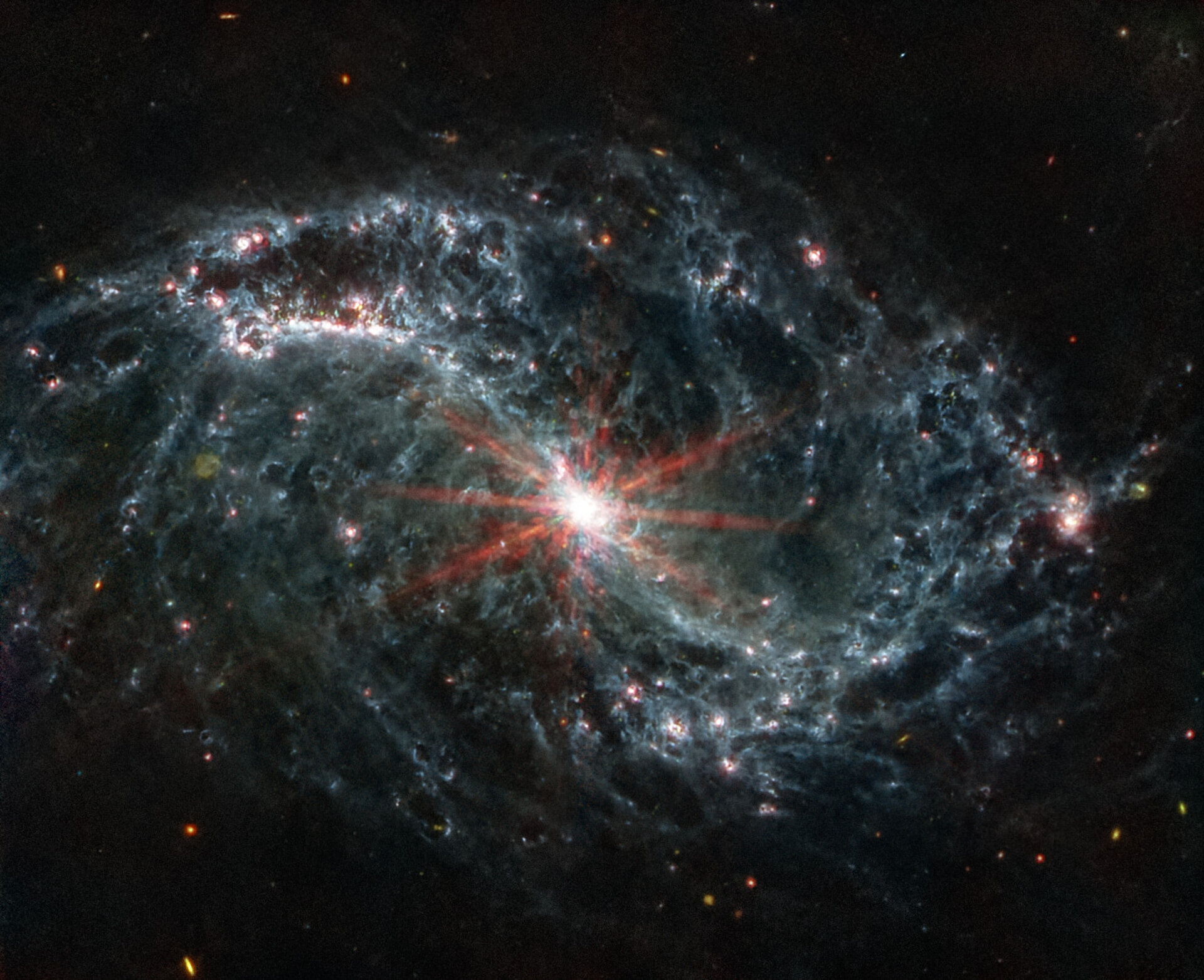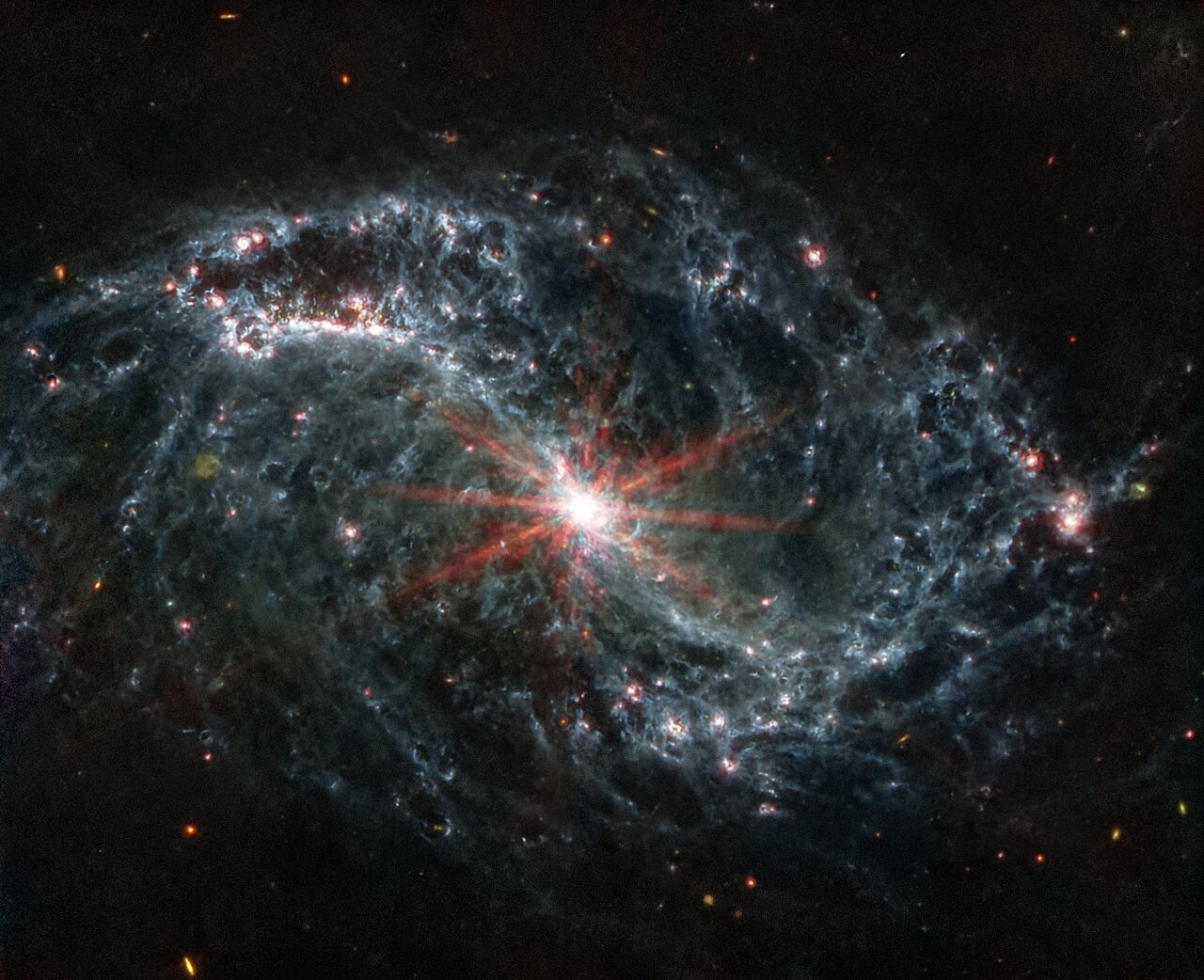Let's take a look at NGC 1365, shall we?
According to Wikipedia, NGC 1365 is believed to be about 200,000 light-years in diameter, which is twice the size of the Milky Way. This is a HUGE galaxy and "extremely barred"! Cheers!

(No, it means that NGC 1365, like all barred galaxies, has a sort of "crossbar of stars" running through its middle. Usually there is a pair of dust lanes in the bar, too, one on each side of the nucleus, but not always.
NGC 4314 has a crossbar of stars, but there are no dust lanes in the bar.)
Actually, NGC 1365 has
two bars

, and it's the inner one that looks so brilliantly bright in today's APOD:
What are we seeing? Let's compare the James Webb MIRI image with two other images of the inner bar of NGC 1365:
As you can see, it is not overwhelmingly obvious in the ESA/Hubble & NASA "mostly optical" image that the inner bar of NGC 1365 is chock full of star formation. But in the ESO image, captured by the
MUSE instrument, whose every detector is apparently sensitive to a huge number of wavelengths simultaneously, the inner bar becomes much more impressive. All the red stuff that we can see in the ESO image is apparently dust, which we also see in the JWST/MIRI image.
Let's compare the MIRI picture of NGC 1365 with MIRI images of galaxies M100 and M61. Let's start with optical and MIRI pictures of M100:
The inner ring of M100 is very bright in both visible and infrared light. There are a lot of bright stars
and a lot of dust in the center of M100.
M100 is not an "overwhelmingly barred" galaxy, although it does have an incipient bar (since it is classified as an intermediate galaxy). But a galaxy that does have a large and impressive bar is M66:
The center of M66 is nowhere near as impressive as the center of M100, neither in optical nor in mid infrared light.
NGC 1365 has both an impressive overall bar structure
and an inner bar that is very bright and impressive in optical light and perhaps even more at mid infrared wavelengths.
Finally, what are those red rays from the very center of NGC 1365?
Why, those are the signature of the supermassive black hole of NGC 13645 accreting matter and acting up! Note that neither M100 nor M66 has these rays. Their black holes are more like well-mannered school children


compared with the big black hole bully of NGC 1365!

Ann
 Barred Spiral Galaxy NGC 1365 from Webb
Barred Spiral Galaxy NGC 1365 from Webb










